Recently I’ve been chipping away at improving my garden paths. Our chickens (who insist on being free-range) have really made that difficult. They have taken significant delight in spreading the mulch all over the garden beds.
Between that and my habit of letting plants grow wherever they like, you would be forgiven for getting very confused walking about my garden. There was very little delineation between what was a path, and what was a garden bed.
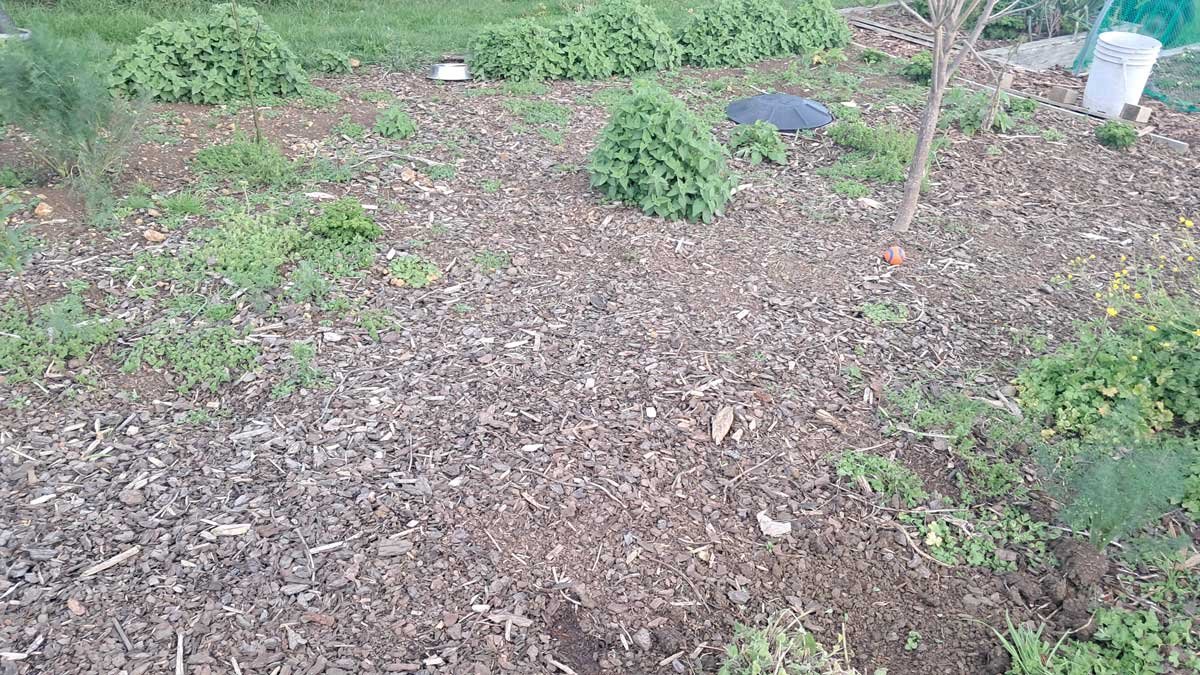
There’s three beds and two intersecting paths in this photo, but you’d never know to look at it.
I’ve pondered what to do about this for a while. I have a big garden with long beds. Even just a little edging in commercial timber gets really expensive, really fast.
I’m happy to spend the effort and time; but I’m less interested in spending the coin.
An abundant resource
Lately I’ve been spending more time in the bush, trapping pests. As I wondered around, I noticed a large number of dead tree ferns, also known as ‘ponga’.
They’re fairly nice ponga logs, just standing there with nothing growing on top. Some of them have some epiphytes growing on them, but most are quite bare.
I’m fairly convinced that when wild pigs were more abundant in the bush, they favoured the tree ferns as scratching posts. I came to believe this regular activity killed a number of the tree ferns. It’s one of the reasons we wanted the pigs gone.
Whether it was the pigs or some other reason, we are left with dozens of dead punga logs standing in the bush. Easily hundreds, if not thousands of dollars of decent landscaping materials.
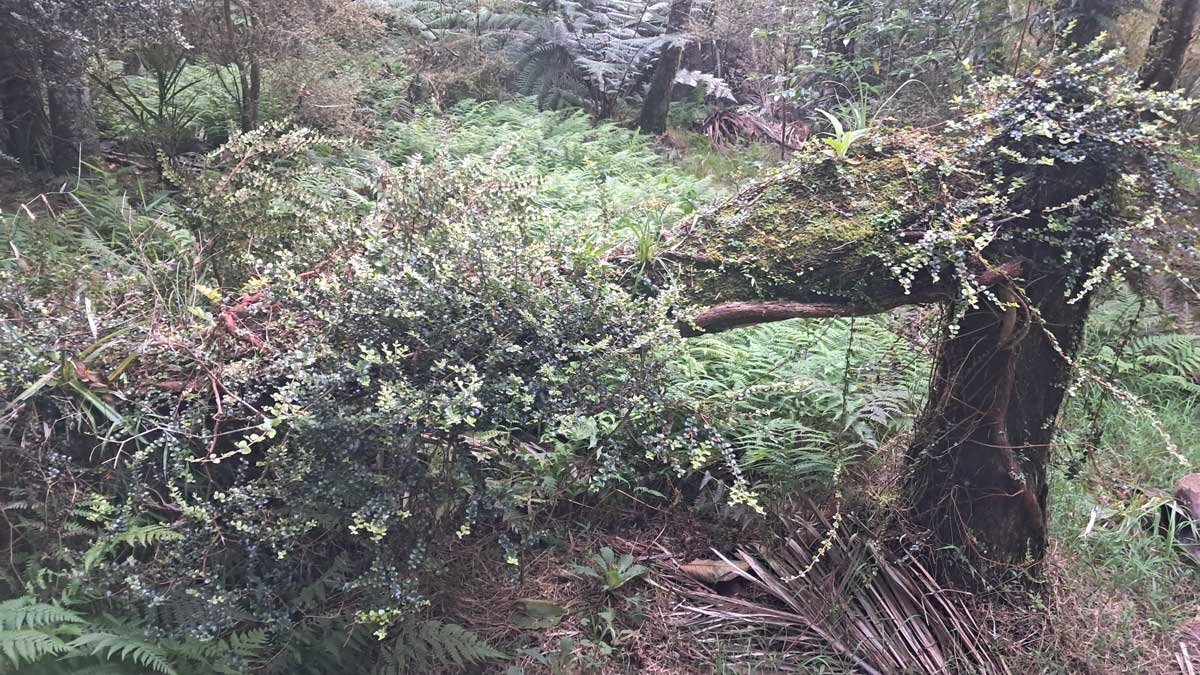
A ponga that died, was colonised by white rātā (Metrosideros albiflora), then fell over when it became too top-heavy. In this case, it’s just interesting. But you don’t get to choose when, or in which direction they’ll fall.
Some are obvious hazards: 8m+ tall and barely hanging in there. Others would be fine to just rot in place, though they would inevitably fall over and potentially roll onto paths.
Or we could—you know—use them.
Legalities and practicalities
The vast majority of our native bush is protected by covenant. The protected section is very steep and mostly inaccessible without passing through a neighbour’s property. You don’t even really see it when you come to visit.
But the bit I’ve been trapping on? The bit where I’m finding these logs? Which I might take you for a bit of a look-about if you bought your gumboots with you? No legal protection. Technically, we could chop the lot down and there’s not much anyone could do about it. There might be some karma, but legally, we’re ok.
We’re not taking living trees, and we’re not responsible for killing them in the first place. We’re also not selling or processing them. So we’re fine to cut them down and use them as landscaping materials for our own purposes.
Practically, the bush section we’re harvesting from is about 100m away from the garden. It is currently too wet to drive vehicles of any size, meaning each ponga needs to be moved manually. The longer ones carried by one or two people, and the shorter ones in a wheelbarrow.
Most of the pongas are—or were—still standing, though there are several already felled by nature. We needed tools capable of cutting them, and went with our battery-powered mini-chainsaw and pole saw. Both of which cut them like butter.
Ideally, this job is finished before the main summer plantings begin in the garden. We needed about 40 logs, ranging from 2m to 4m.
Stages
It’s been a bit of a process completed in stages to actually get the pongas into the garden. Firstly, we went into the bush with the pole saw. I showed Richard some of tree ferns that could be removed. As I checked the rat traps, he mowed them down.
A few days later, we went back and started sorting through them. We took a few 4m sections to the fence to be transported later. We also found a few shorter sections, which we placed by the stile, figuring they were easily moved by one person.
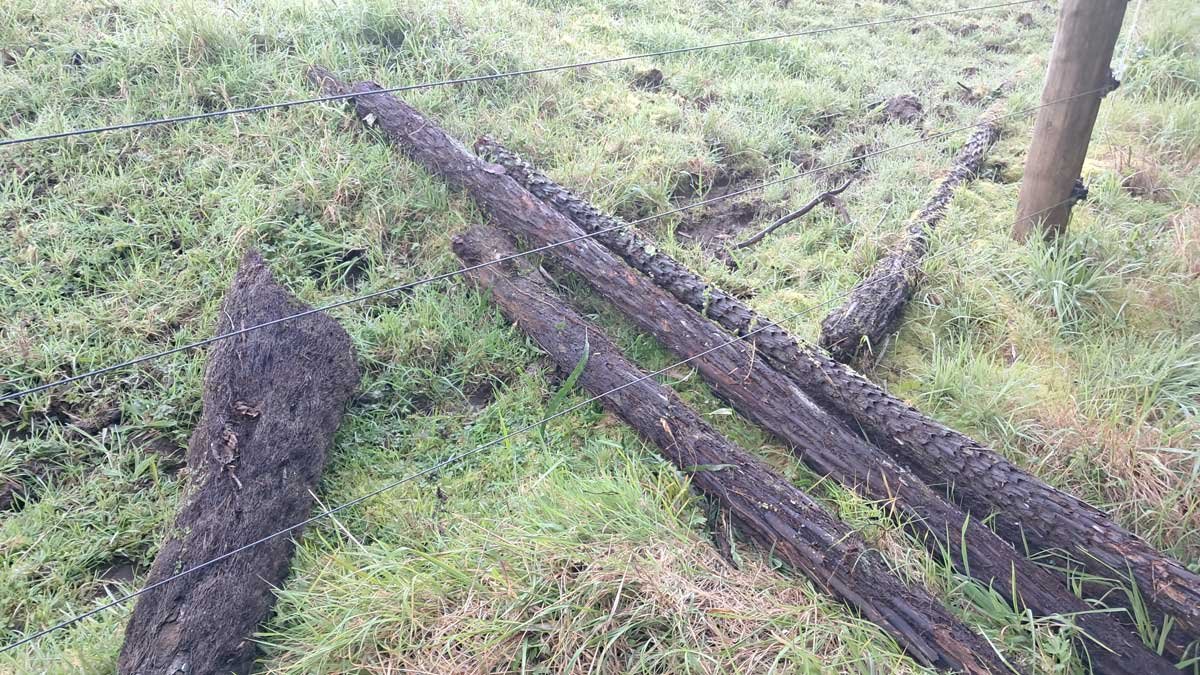
There were several pieces which need cutting to transport. We left them initially, but came back again a bit later on with a measuring tape to cut them to size and maneuver out. Mostly it’s been us carrying the logs either together or individually when the mood takes us over the course of the week.
But after that first sort, I decided to go out after dinner (yay Daylight Saving) and pick up all the shorter pieces in one go with a wheelbarrow. And that was… really weird.
Stalker cows
Our cows are usually a docile bunch who generally keep a respectful distance. They don’t approach food or take head scratches, or be nuisances. Which is why I chose to cross the paddock in the first place. It’s not usually an issue.
But this time, they first took an interest in the wheelbarrow on my way there. It was the kind of interest they take in the cats, or the chickens, or when we throw the ball for the dogs. They’re very interested in other animals and their relationships with us. It felt like maybe I was wheeling some strange new animal past them.
And they were really, really interested in the half-a-dozen pongas I started wheeling back in the unsteady wheelbarrow across boggy and uneven soils.
They stalked me, the whole way. I wasn’t scared, but they’re not small cows anymore. We were walking along a hillside, so I was aware the situation could turn dangerous. I couldn’t put the wheelbarrow down to raise my hands and chase them off without losing the pongas down the hill.
With about 20m to get to the fence, I balanced the wheelbarrow enough for a free hand to call Richard and let Roxy out. Within 10 seconds, she’d let out some top-knotch barks, and flown over the fence to land right by my side.
The cows scattered, and I got the logs to the fence. Then I received a final zap from the fence’s electrical current as I came over, landing on the ground with a yelp, along with the logs.
So I’m not sure Tāne-mahuta is as happy about my plan as I am. But we have since moved the cows to the next paddock and the later trips were not nearly as eventful.
All the king’s horses
I’ve been working to put my garden back together again. The mulch has been scraped back onto my paths, which requires quite a lot of weeding along the way. As a result, my garden is starting to look rather spiffing. Definitely getting ready for all those plans I have this growing season.
Each ponga is unique, so it’s a bit like putting a puzzle together. I’ve been walking around the gardens with logs as long as 4m, trying to figure out the best spot. It’s still a bit of a work in progress, but I feel confident all the beds will be completed before they need planting again.
The logs are doing a great job at containing the mulch, even as the chickens scratch at it. The cats are enjoying them as scratching posts too. They won’t last forever, but they’ve solved a problem well for now.
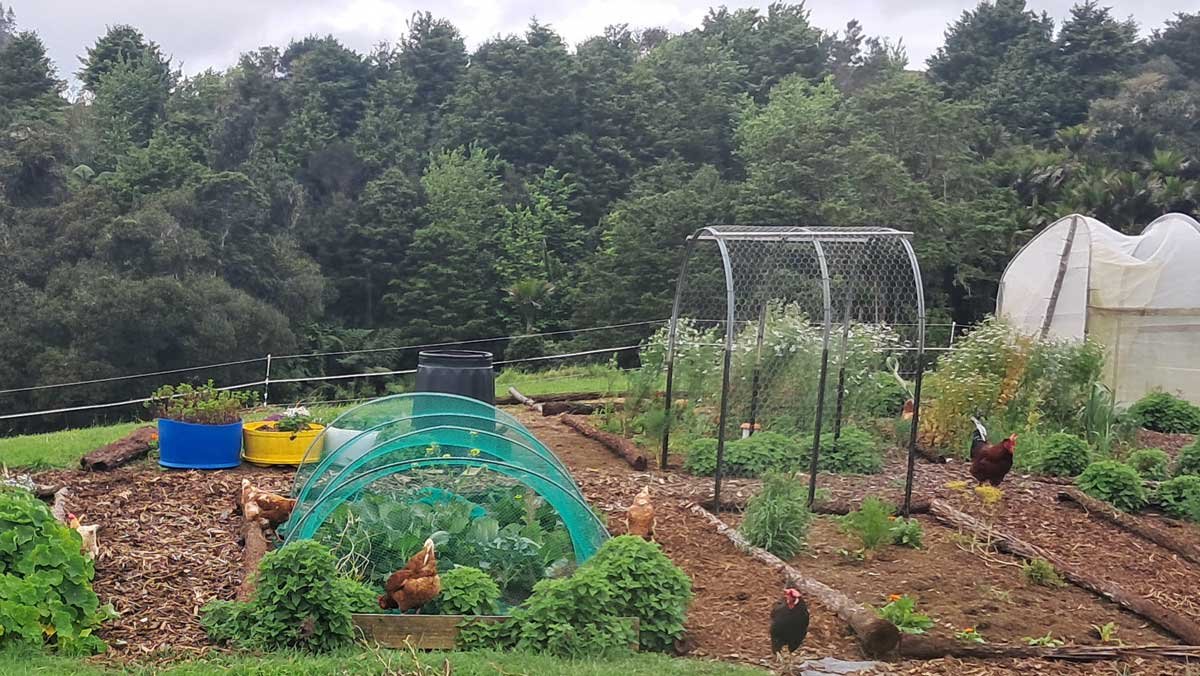
As I said up top, I’m happy to spend the time and effort. My plan is to give back at least as much as I’m taking. Once the pongas are clear from the bush, I’ll make sure the space left behind is filled by native plants, and continue work to eradicate the various invaders out there and restore its mana.
I’m always quite cognisant that humans have a bad habit of taking. I don’t want this to be just that. It’s the exact reason I haven’t used our “resources” more to date. Because the bush isn’t a resource to me. It’s a living ecosystem—which in many ways I consider a being—that I don’t have any real right to plunder.
Still, I hope it can forgive me as I make a real stab at tipping the balance in its favour in the coming years.

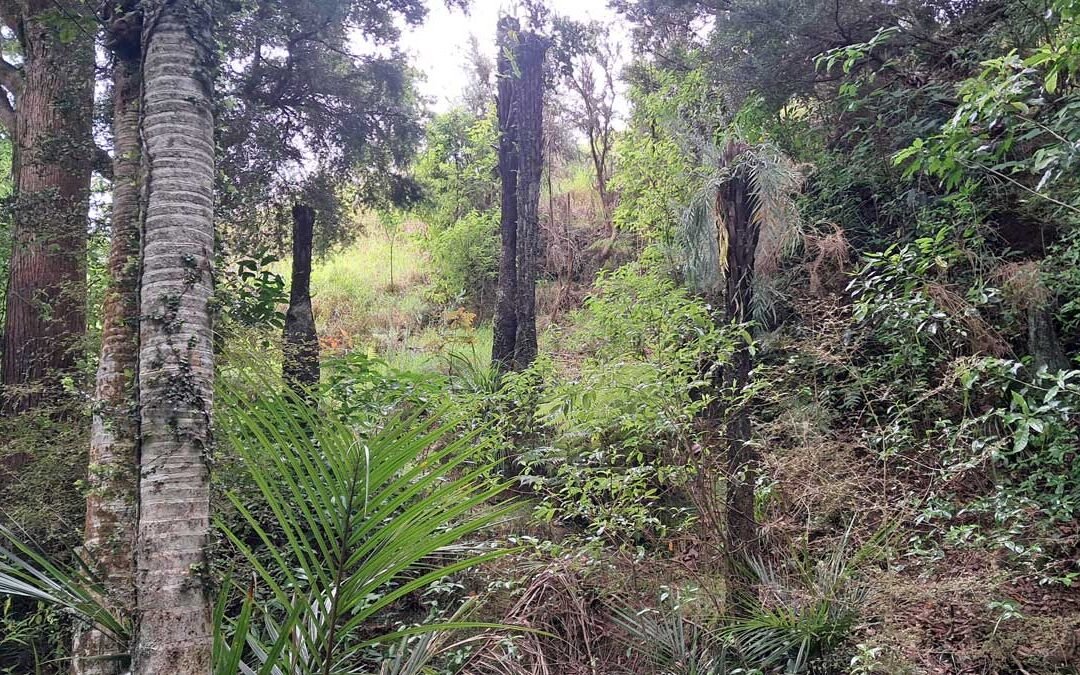

Kiaora Kat thanks .My husband and I are really enjoying your korero about your lifestyle living its great. We live of grid and do our utmost to be totally self sufficient. So look forward to learning from what your doing with different plants and utilizing natural resources without destroying our taio. So thanks for sharing